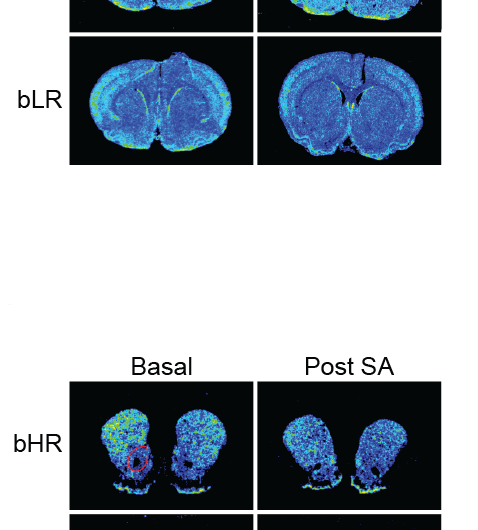April 26, 2016 report
Genes for two molecules in rats found to be involved in response to cocaine and other stimulants

(Medical Xpress)—A team of researchers affiliated with the University of Michigan and the University of Alabama has found two molecules expressed in rats that are involved in their response to cocaine and other stimulants. In their paper published in Proceedings of the National Academy of Sciences, the research group describes their study of two molecules, fibroblast growth factor and dopamine D2 receptor, which appear to make a rat more or less sensitive to cocaine addiction.
To better understand why it is that some people seem to be more likely to become addicts if they try certain drugs, the researchers have been looking for genetic differences, in this case, in rats. They bred two different rat lines, one group that were called "high responders" because they were more impulsive and had a temperament that mimicked that of human addicts, and the other which they dubbed "low responders" which were rats that had "average" personalities and that did not respond as dramatically to stimulants.
In studying the rats prior to offering them cocaine, the team found that the high responders had higher than average amounts of fibroblast growth factor in their bodies, and that it stayed at high levels even after they became addicted to cocaine. Interestingly, the same rats also had lower than normal levels of the dopamine D2 receptor prior to addiction, but normal levels once they became addicted. The molecule levels in the rats are regulated by genetic factors—the proteins are encoded by genes, and thus more are created in some rats than others, for unknown reasons.
The group's findings suggest that levels of both molecules in the body can be used as a means to gauge a rat's (and perhaps a person's) susceptibility to becoming an addict, (which is easily checked using blood or saliva tests) before they ever try a drug, perhaps offering an early intervention warning.
The team next plans to look a little deeper at the molecules and their impact on both rats and humans to try to better understand why their levels can make rats (and people) more likely to become addicts and then perhaps to look into ways to counteract their impact.

More information: Shelly B. Flagel et al. Genetic background and epigenetic modifications in the core of the nucleus accumbens predict addiction-like behavior in a rat model, Proceedings of the National Academy of Sciences (2016). DOI: 10.1073/pnas.1520491113
Abstract
This study provides a demonstration in the rat of a clear genetic difference in the propensity for addiction-related behaviors following prolonged cocaine self-administration. It relies on the use of selectively bred high-responder (bHR) and low-responder (bLR) rat lines that differ in several characteristics associated with "temperament," including novelty-induced locomotion and impulsivity. We show that bHR rats exhibit behaviors reminiscent of human addiction, including persistent cocaine-seeking and increased reinstatement of cocaine seeking. To uncover potential underlying mechanisms of this differential vulnerability, we focused on the core of the nucleus accumbens and examined expression and epigenetic regulation of two transcripts previously implicated in bHR/bLR differences: fibroblast growth factor (FGF2) and the dopamine D2 receptor (D2). Relative to bHRs, bLRs had lower FGF2 mRNA levels and increased association of a repressive mark on histones (H3K9me3) at the FGF2 promoter. These differences were apparent under basal conditions and persisted even following prolonged cocaine self-administration. In contrast, bHRs had lower D2 mRNA under basal conditions, with greater association of H3K9me3 at the D2 promoter and these differences were no longer apparent following prolonged cocaine self-administration. Correlational analyses indicate that the association of H3K9me3 at D2 may be a critical substrate underlying the propensity to relapse. These findings suggest that low D2 mRNA levels in the nucleus accumbens core, likely mediated via epigenetic modifications, may render individuals more susceptible to cocaine addiction. In contrast, low FGF2 levels, which appear immutable even following prolonged cocaine exposure, may serve as a protective factor.
© 2016 Medical Xpress


















